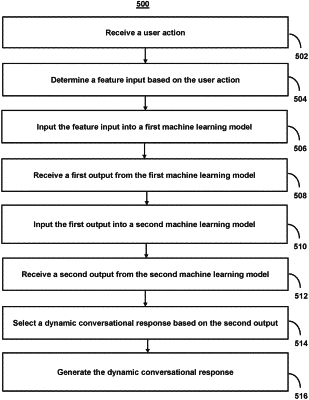| CPC H04L 51/02 (2013.01) [G06F 18/23 (2023.01); G06N 20/20 (2019.01); G10L 15/16 (2013.01); G06V 10/763 (2022.01); G06V 10/809 (2022.01); G06V 10/82 (2022.01)] | 20 Claims |

|
1. A system for generating responses using two-tier machine learning models, the system comprising:
cloud-based storage circuitry configured to:
store a first machine learning model, wherein the first machine learning model is trained to select an intent cluster from a plurality of intent clusters based on user actions, and wherein each intent cluster of the plurality of intent clusters corresponds to a respective intent of a user following a first user action; and
store a second machine learning model, wherein the second machine learning model is trained to select a specific intent from a plurality of specific intents of a selected intent cluster based, and wherein each specific intent of the plurality of specific intents corresponds to a respective specific intent of the user following the first user action;
cloud-based control circuitry configured to:
receive the first user action at a user interface;
select the second machine learning model, from a plurality of machine learning models, based on the intent cluster selected from the plurality of intent clusters, wherein each intent cluster of the plurality of intent clusters corresponds to a respective machine learning model from the plurality of machine learning models;
select, using the second machine learning model, a response from a plurality of responses; and
cloud-based input/output circuitry configured to:
generate the response.
|